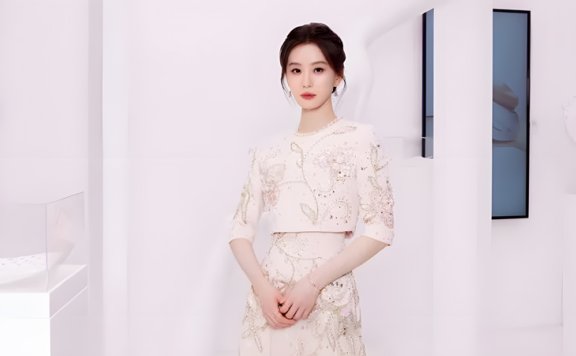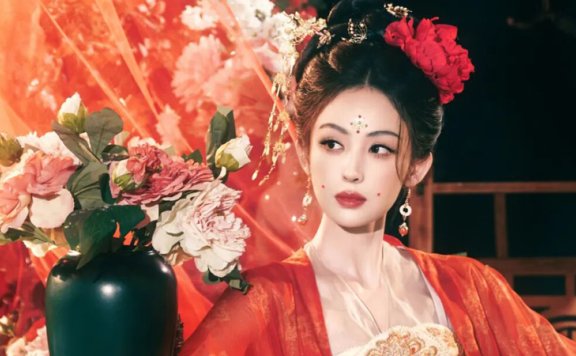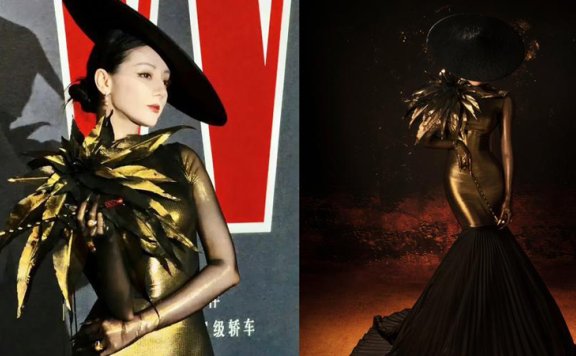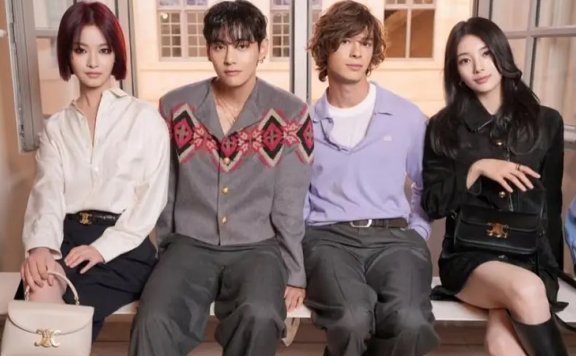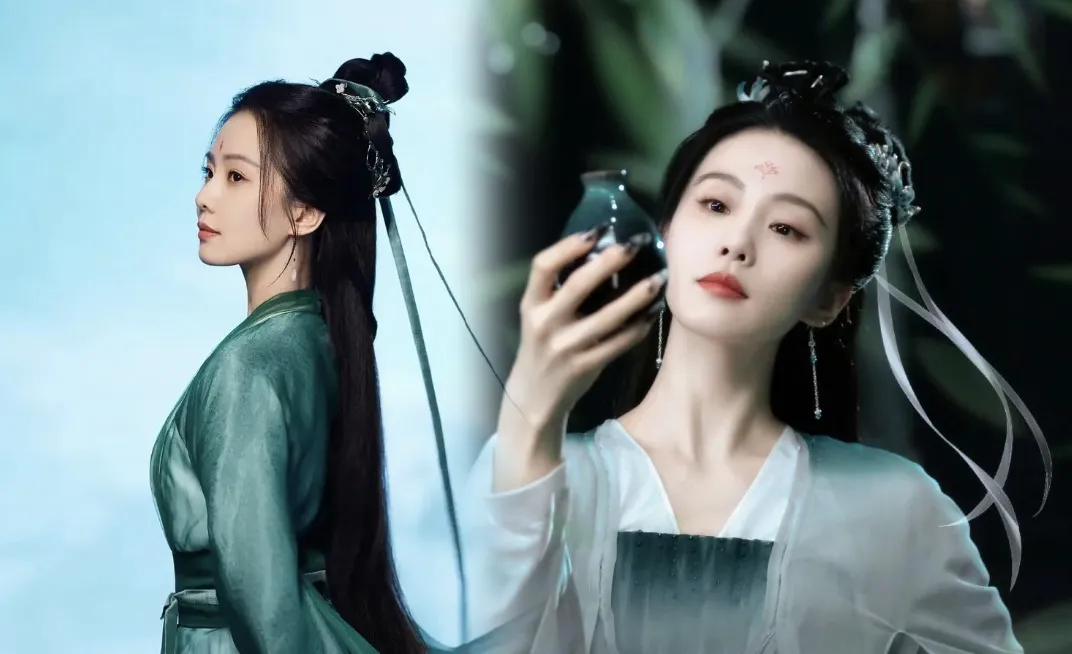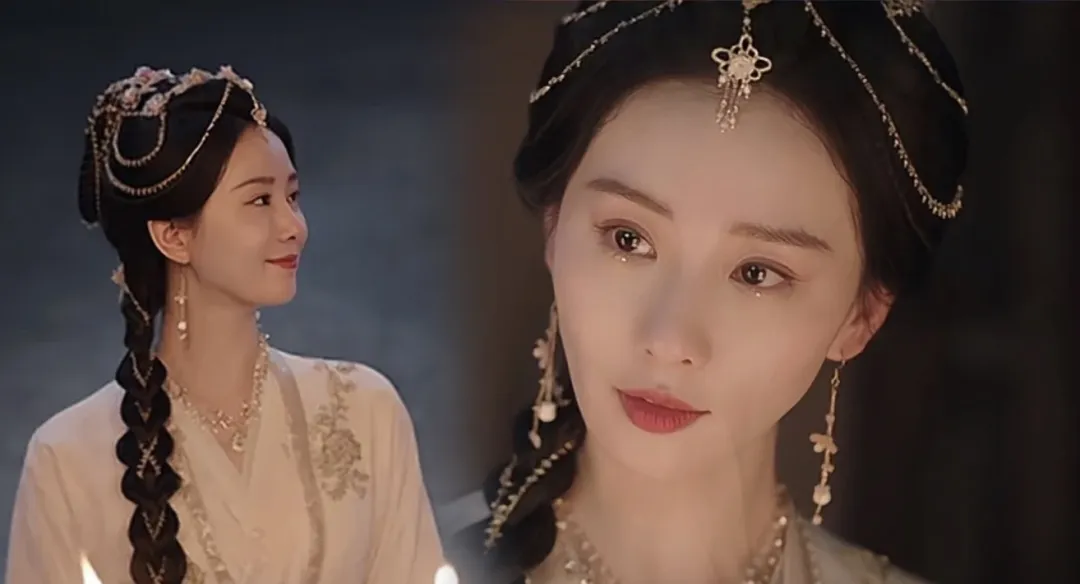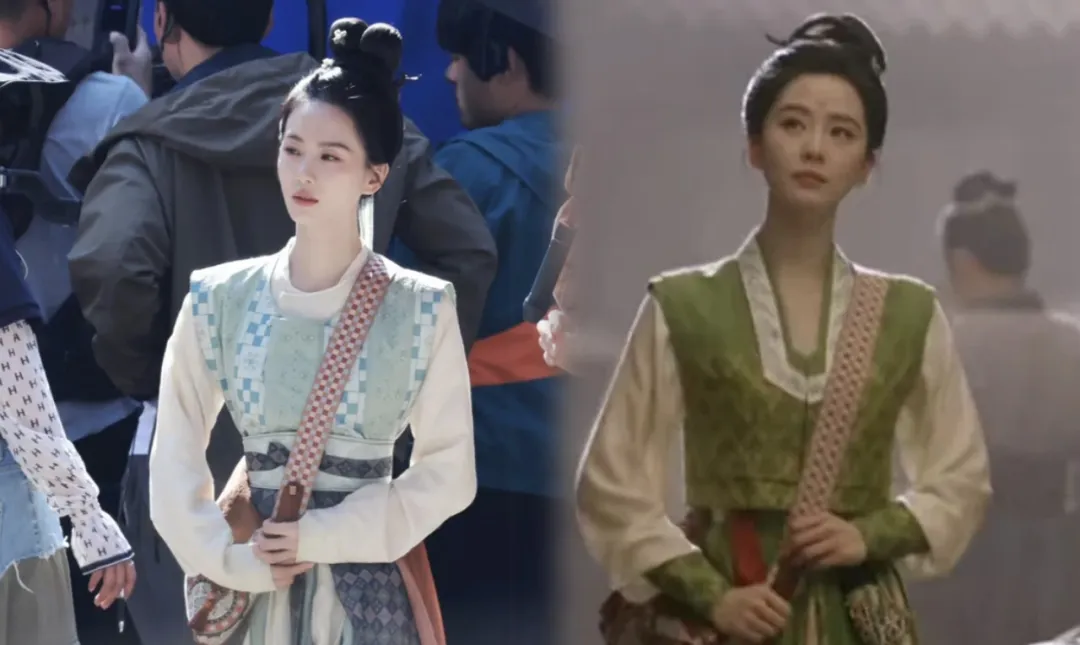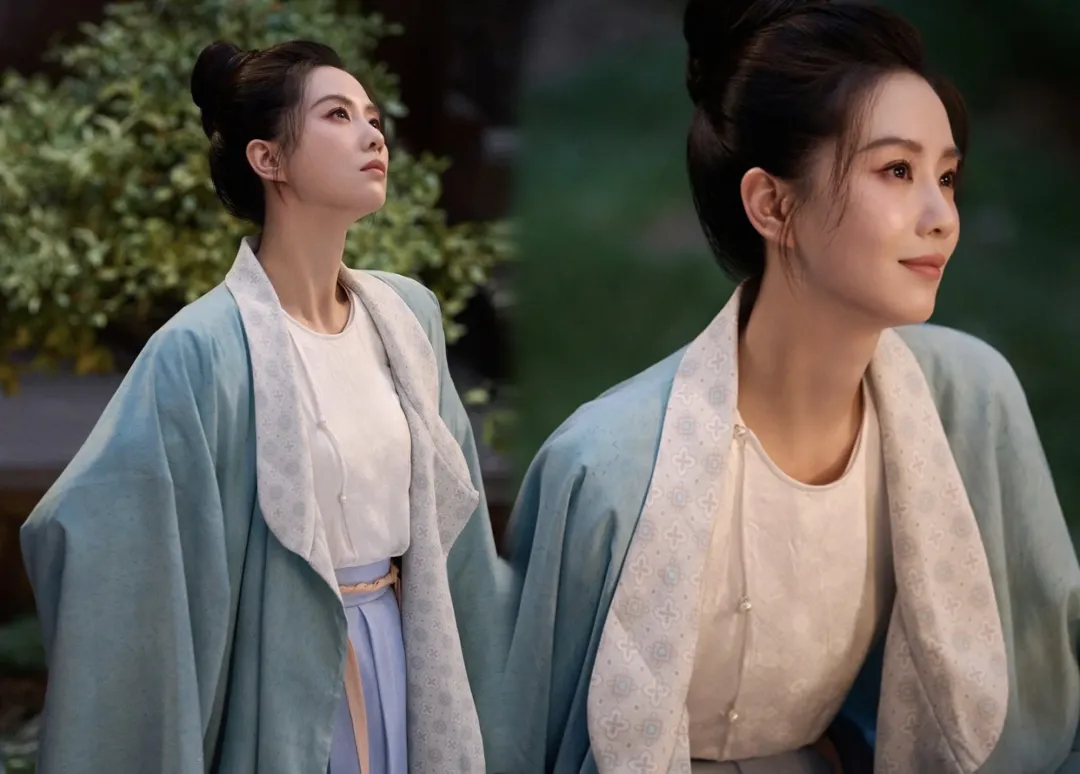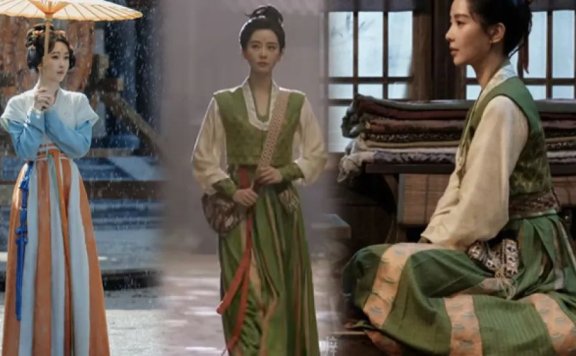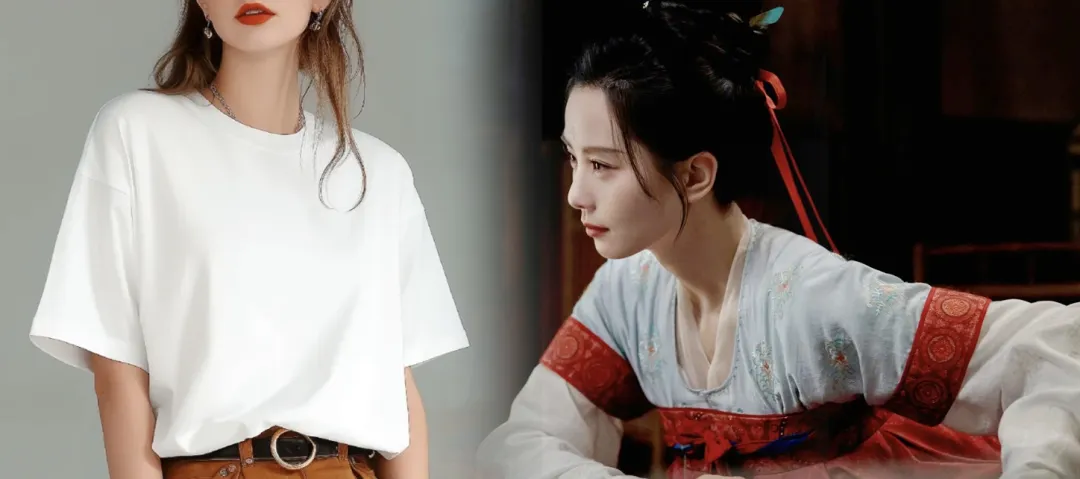-
What Makes Liu Shishi’s Pink Tulle Gown a Modern Fairytale?
When Liu Shishi (刘诗诗) recently appeared in a pale pink tulle gown, the internet momentarily stopped scrolling. The image, set against a soft ink-wash background, felt like a living painting—a delicate fusion of classical China elegance and contemporary romance. This was not merely a red-carpet moment; it was a statement. Her look transcended typical celebrity fashion, offering a quiet manifesto on how tradition can converse with modern design. It presented a question many now ask: how can one wear history without being trapped by it? Liu Shishi’s answer, woven into every stitch of that gown, is proving profoundly influential. The Dress Speaks The gown’s power lies in its nuanced details. The shade, reminiscent of early cherry blossoms, softened her silhouette and enhanced her innate poise. Delicate pearl edging at the neckline provided a subtle lift of sophistication, avoiding any hint of ostentation. The true marvel was the intricate embroidery—golden branches and leaves meticulously crafted across the skirt, resembling a fine Gongbi (工笔) painting brought to life on fabric. This element rooted the dress firmly in an artistic heritage while its sheer tulle layers kept it ethereally modern. Strategic design choices amplified a specific grace. The half-sleeves gently suggested rather than…- 9
- 0
-
Tang Dynasty Hanfu: How Celebrities and Flattering Styles Win Hearts
In today's fashion landscape, traditional attire from China's Tang Dynasty is experiencing a vibrant resurgence. This era, celebrated for its cultural prosperity and artistic innovation, has left a lasting legacy in clothing that emphasizes grace and adaptability. Hanfu styles from this period, with their flowing silhouettes and intricate details, are being rediscovered by a new generation. What makes them particularly appealing is their ability to flatter diverse body types and facial features, moving beyond rigid beauty standards. From curvy figures exuding opulence to slender frames radiating elegance, Tang Hanfu offers a versatile canvas for self-expression. Recent television series and celebrity endorsements have amplified this trend, making it more accessible and inspiring people to embrace their unique beauty through historical fashion. Flattering Designs The Qixiong Ruqun (齐胸襦裙) stands out as a quintessential Tang Dynasty garment, known for its high-waisted cut that rests above the bust. This design creates a universally flattering shape by avoiding tight fits and instead using soft, draping fabrics that flow with the body. For those with curvier builds, the loose structure and billowing sleeves help smooth lines and convey a sense of dignified luxury. Slimmer individuals find that the lightweight materials enhance their natural grace, adding an…- 24
- 0
-
Dilraba's Black Gold: Did She Redefine Red Carpet Royalty in 2025?
After over 600 days away from the spotlight, Dilraba (迪丽热巴) made a jaw-dropping return at the 2025 film gala, instantly dominating headlines. At 32, she stunned in a black-and-gold mermaid gown, sparking an online frenzy with 800 million-plus topic views on social media. Her poised walk under CCTV's unforgiving cameras silenced doubters, proving her enduring star power. This wasn't just a fashion moment—it signaled a career resurgence, fueled by her acclaimed role in Sword Rose (利剑玫瑰). As peers watched in awe, Dilraba reminded everyone why she remains an unrivaled force in entertainment, blending timeless beauty with raw talent. Fans and critics alike are now buzzing about her next moves in an industry hungry for authenticity. The Showstopper Dilraba chose silence over hype before the event, saving her reveal for the red carpet. She emerged in a shimmering gown from a top designer's 2025 fall collection, its gold accents catching every light like liquid metal. A black hat and floral details added vintage flair, while the fitted silhouette highlighted her sharp waist-to-hip ratio. Onlookers gasped as she moved with regal ease, evoking whispers of a "living oil painting." This calculated suspense amplified her entrance, turning it into a viral spectacle that…- 103
- 0
-
Liu Shishi’s Crimson-Haired Declaration of Self at 38
Imagine the shockwaves: Liu Shishi (刘诗诗), long synonymous with ethereal grace and porcelain-doll elegance, standing transformed. Gone was the delicate white gown, replaced by a vision of crimson hair cascading like liquid fire over bare, luminous shoulders – a stunning declaration as the "Ocean Princess." This wasn't a stylist's fleeting experiment; it was a deliberate, personal detonation within her carefully curated world. It whispered a question louder than any headline: What happens when the quietest force decides to roar? The Crimson Unveiling Witnesses describe a charged stillness settling over the set as she prepared. A soft smile, then the deliberate shrug of an outer garment. The shock of vibrant red tumbling down, framing shoulders exposed not for mere provocation, but as a canvas for raw power. Photographers froze, recalibrating their lenses to capture this unexpected eruption. This wasn't the gentle Liu Shishi of collective memory; this was a force emerging from the deep. Her mastery lay in minimalism. No theatrical gestures, just eyes holding depths as mysterious and potent as the sea itself. A subtle arch of the brow, a curve of the lip held in perfect tension – radiating a contained ferocity reminiscent of mythic sirens. This calculated restraint…- 70
- 0
-
Asian Stars Steal Spotlight at Paris Fashion Week
The ongoing Paris Fashion Week has transformed into a global stage where cultural boundaries blur and style narratives intertwine. Beyond the haute couture runways, the attendance of Asian celebrities has sparked conversations about evolving aesthetics and cross-cultural influences. Chinese actress Liu Shishi (刘诗诗), Korean icons Bae Suzy and Park Bo-gum, alongside rising talents like Li Gengxi (李庚希) and Kim Tae-hyung, each brought distinct interpretations of contemporary fashion to the City of Lights. Quiet Power in Minimalism Liu Shishi’s presence for CELINE epitomized understated sophistication. Her khaki maxi skirt paired with a crisp white turtleneck embodied "quiet luxury," a trend championing refined simplicity over ostentation. The deliberate choice of a silk scarf as a hair accessory became her signature touch—elevating the ensemble with intellectual grace. Her poised demeanor, captured mid-stride under an umbrella, revealed a mastery of atmospheric storytelling through posture alone. The actress’s second look—a black button-down dress layered over tailored trousers—hinted at enigmatic allure. Unlike overtly theatrical designs, her outfits relied on precision tailoring and monochromatic harmony, proving that subtlety commands attention. This philosophy mirrors a shift toward intentionality in fashion, where wear ability merges with artistic vision. Korean Charm Reimagined Bae Suzy’s arrival showcased why she remains Korea’s…- 180
- 0
-
Why Ancient Cdramas Frequently Use Headbands for Styling?
No matter which ancient - cdrama it is, there's always a headband on or behind the character's head. This seemingly simple headband can make the wearer look graceful and full of Chinese charm. How can such a simple accessory be so appealing? Let me state my view first. This headband is extremely common in TV dramas and Hanfu makeup and styling. For instance, Liu Shishi (刘诗诗) often sported headband looks in the ancient - costume drama Huai Shui Zhu Ting (淮水竹亭). Although we usually just call it a "headband", it actually has multiple names. Let's briefly sort out its common names and wearing methods. Netizens joke that this headband is like a veteran actor, as it appears in every ancient - costume drama with excellent "acting". One of its names contains a character that's difficult to write (a character composed of "xu" on top and "jin" at the bottom, pronounced "xu", meaning a hair rope). According to Zhu Zi's Family Rituals (朱子·家礼), for mourning women, the "xu - jin" is a piece of slightly thin linen about eight inches long, used to tie the hair roots with the rest hanging at the back. In the Song Dynasty's Records of the… -
Liu Shishi's Strappy Bustier: the Special Chinese Underwear
Liu Shishi's Strappy Bustier Is So Special. Netizens say they haven't seen such a style in costume dramas since then. In the costume drama Strange Women in Liao Zhai (聊斋奇女子), when Liu Shishi, playing Xin Shisiniang (辛十四娘), danced, she wore a very special "wide - strapped underwear". Were ancient undergarments really so "modern"? And what were they called? Let's start with the conclusion. There were numerous forms of ancient undergarments. Some people simply called them "Moxiong" (抹胸). In a broad sense, it was a "general term" for ancient undergarments. As the name implies, it was clothing that covered the chest. There were one - piece Moxiong styles, strappy styles, and even cross - strappy styles. The styles were truly diverse. The Moxiong in Hanfu encompasses various undergarment categories. As more people used this term, it became a "generalized term". The names also differed in different periods, and some were even named according to the tombs where they were unearthed. Although in some excavation reports, Moxiong was directly marked, each period had its own mainstream characteristic undergarments. Moxiong Styles Currently, we know that the "mo" in Modu (肚兜), Mofu (抹腹), and Moe (抹额) is pronounced "mò". In this phrase, its original…- 131
- 0
-
Name of Liu Shishi's Headdress
What is the name of Liu Shishi's beautiful headdress? The production team of Huai Shui Zhu Ting, in which Liu Shishi stars, recently released a video. In the footage, Liu Shishi appears wearing a pearl - studded headdress, presenting a unique blend of exotic and traditional Chinese beauty. Did such accessories truly exist in the past, and what were they called? To put it simply, similar ornaments were found in both the Central Plains and the Western Regions, belonging to the category of Yingluo (璎珞) headdresses. Their origins can be traced back to before the Warring States period, possibly due to East - West exchanges. Here, we'll focus on the Chinese names for such accessories: Luosuo (络索), Lianshu (帘梳), Zhuyingluo (珠璎珞), or Weiji (围髻). Let's take a closer look at these names. Luosuo Originally, 'Luosuo' meant 'rope,' and later it was extended to refer to hanging ornaments. According to Guangya·Shiqi, 'All connected ropes are called Luo.' Xilin Yinyi Volume 6 states that 'Suo is another name for rope.' Huang Geng of the Song Dynasty wrote in Gui Qing Xiao Xiang Lian Ti, 'The golden Luosuo with coral pendants, standing alone in the spring breeze admiring peonies.' The Southern Song engraved…- 141
- 1
-
Ancient Chinese Bags: A Huaxia Fashion
Do you think ancient Chinese people didn't carry bags just because you rarely see them in TV dramas? Historical records clearly show that carrying bags has been a long-standing practice in China. In Liu Shishi's new period drama Kill My Sins, her character sports various bags with each outfit. Some netizens even counted one bag per costume! Where do you think ancient people kept their money? Did they really not carry bags? Don't get too obsessed with Liu Shishi's large and small bags in the show. In fact, we've had our own bags since ancient times, and many would be considered trendy even today. Archaeological discoveries repeatedly prove that fashion's ultimate inspiration comes from Huaxia (华夏) culture. A leather bag unearthed from Niya in Xinjiang, dating back to the Han-Jin period, stunned the world when it was revealed. It looked exactly like a modern saddle bag from a luxury brand - proving that this fashion trend existed over 1,600 years ago. This isn't an isolated case. Ancient Chinese had all kinds of bags: saddle bags, handbags, crossbody bags, waist bags, box evening bags, backpacks, net bags, underarm bags... These discoveries show remarkable similarities between ancient and modern fashion across a…- 648
- 1
-
Did Liu Shishi Wear the Wrong Hanfu?
The Versatile Design of Tang Dynasty Outerwear Liu Shishi's costume in the new drama Kill My Sins features a loosely draped Hanfu style that has sparked online discussions. This garment, known as Piao (披袄), represents a traditional outerwear design from the Tang Dynasty. Unlike modern coats, this historical clothing piece demonstrates remarkable adaptability across seasons and occasions. The Piao originated from the Yuanlingpao (圆领袍), a round-collar robe commonly worn during the Tang era. Through practical modifications, ancestors transformed it into a multi-functional garment. The collar was widened and curved for both aesthetic appeal and warmth retention, while some versions adopted straight collars. When worn open, the decorative inner lining became visible, creating a sophisticated yet understated fashion statement. Tang Dynasty clothing didn't follow strict seasonal classifications. Instead, people adjusted the fabric thickness and layering for temperature regulation. Historical records like Tang Liudian (唐六典) document how winter versions contained specific amounts of padding, essentially serving as ancient down jackets. Summer versions featured lighter materials, functioning similarly to modern air-conditioning jackets. This practical design wasn't limited by gender - both men and women wore variations of the Piao. The garment's versatility allowed it to serve as a windbreaker in autumn, insulated coat…- 199
- 2
-
Ancient Striped Dresses in Tang Dynasty
In historical dramas like Kill My Sins, we often see actresses like Liu Shishi (刘诗诗) wearing striped dresses that resemble modern fashion. But did such striped dresses really exist in ancient times? Was the Tang Dynasty that ahead of its time? The answer is yes. These narrow-striped dresses were popular from the early Tang Dynasty to the Wu Zhou period, with origins tracing back to the Han and Jin dynasties. Interestingly, these stripes weren’t printed but were meticulously sewn together. This visual technique to elongate the figure wasn’t a modern invention—our ancestors had already mastered it for a sleek, fashionable look. Their aesthetic was truly scientifically slimming. The Art of Poqun (破裙) Poqun doesn’t mean torn dresses but refers to paneled skirts made by stitching separate fabric pieces. These skirts, dating back to the Han and Jin dynasties, were discovered in the Bijiatan Tomb. They could be pleated or layered, showcasing remarkable flexibility in design. Color Combinations Poqun featured both monochromatic and contrasting colors, the latter called Jianse Qun (间色裙). Early Tang murals often depict red - white, black - white, or blue - white stripes, along with red - blue combinations. Ultra - Narrow Stripes By the early Tang…- 194
- 1
-
Liu Shishi's Tang-style Vest Sparks Fashion Trend
In the historical drama Palm Heart, Liu Shishi donned a Tang-style shirt paired with an outer vest, sparking discussions among netizens: Isn't this just a vest? And it can be worn outside? This outer garment, known as Beizi (背子), was a popular style in early Tang Dynasty. It came in various designs, including the Tanling (坦领, open-collar), Jiaoling (交领, crossed-collar), and Jixinling (鸡心领, sweetheart neckline). The Tanling design, in particular, resembles modern-day vests, typically worn over long-sleeved inner garments. Though both Beizi and Banbi (半臂, half-sleeved jacket) were outerwear, they differed in sleeve length. Beizi was sleeveless, while Banbi had half-length sleeves, hence the name. Historical records suggest Banbi predated Beizi, with Emperor Gaozu of Tang shortening the sleeves to create the latter. By the Song Dynasty, Beizi evolved into a more generalized term, Beizi (褙子), encompassing sleeveless, long-sleeved, and mid-length sleeve designs. It became a unisex garment, with men's versions featuring Panling (盘领, round collar) for military officials and Dui Jin (对襟, front-opening) or Jiaoling for scholars. Women's Beizi often had front-opening designs, as depicted in The Dream of the Capital (东京梦华录). This fusion of functionality and style made Beizi a practical choice for daily wear, much like Liu…- 168
- 1
-
Liu Shishi Wears Ancient T-Shirt Style
Recently, netizens noticed something special about Liu Shishi's costume in her new drama. It looked surprisingly like a modern short-sleeved T-shirt. However, this is actually a traditional Tang Dynasty garment known as Tanling Banbi (坦领半臂). Let's break down the name. Tanling refers to the neckline style, while Banbi indicates the sleeve length. Combined, they describe a specific type of clothing popular during the Tang Dynasty. The Tanling Neckline The Tanling neckline resembles modern pullover shirts. This style dates back to the Shang and Zhou dynasties, though its exact structure remains unclear. It became particularly fashionable in the early Tang Dynasty. Compared to the round neckline, Tanling features a wider opening, often extending to the chest. Some designs even include a pointed center, earning it the nickname "chicken heart neckline". The resemblance to T-shirts comes from this broad neckline, similar to today's fashion pullovers. However, unlike modern T-shirts, Tanling garments usually have buttons or ties at the front or side for fastening. This design allowed wearers to change clothes without disturbing their elaborate hairstyles. The Banbi Sleeves The Banbi sleeves, often seen in period dramas, are typically associated with maids due to their practicality. However, they were not exclusive to any social…- 190
- 0
❯
Profile
Check-in
Message
Message
Search
Contact Us
Scan to open current page
Top
Checking in, please wait
Click for today's check-in bonus!
You have earned {{mission.data.mission.credit}} points today!
My Coupons
-
$CouponsLimitation of use:Expired and UnavailableLimitation of use:
before
Limitation of use:Permanently ValidCoupon ID:×Available for the following products: Available for the following products categories: Unrestricted use:For all products
No available coupons
Daily tasks completed:
